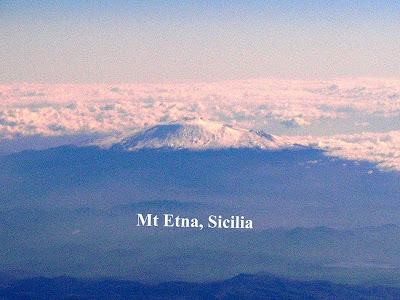
Mount Etna is a volcano in Sicily, Italy (the island at the bottom left of Italy).

 Volcanoes are not always erupting. This picture is of Mount Etna when it is inactive. It looks so beautiful and harmless, but don't let it fool you!
Volcanoes are not always erupting. This picture is of Mount Etna when it is inactive. It looks so beautiful and harmless, but don't let it fool you!This is a picture of Mount Etna being active. Hot lava flows from the top and oozes all the way down the mountain while the volcano is constantly shooting out hot gases and lava.










